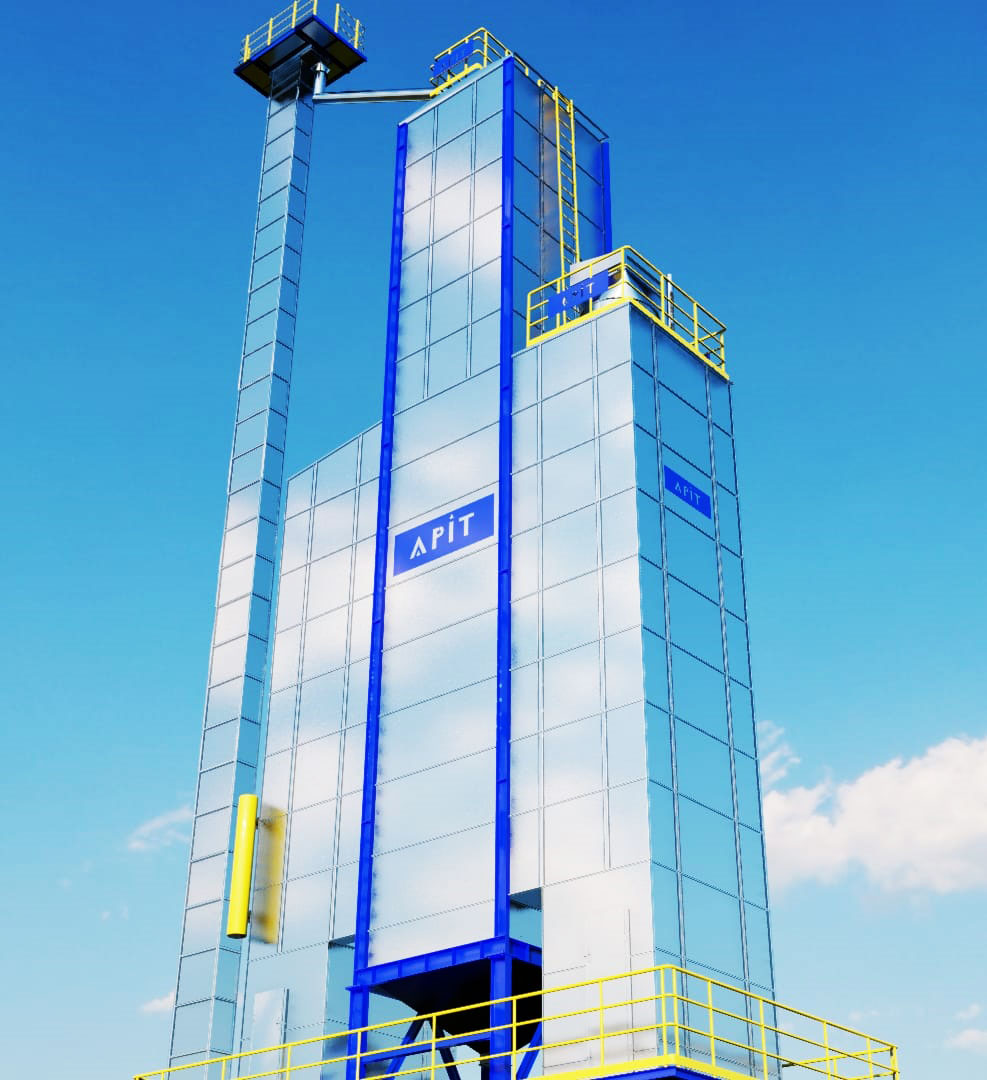Drying
- Surface area of the grain
- Air temperature
- Speed of the current of air passing over the grain
- Relative humidity or wetness of the air
The drying rate during the first phase will be increased by increasing the grain surface area by splitting the grain and scoring them.
During the second phase, the drying rate depends on:
- Type of grain
- Thickness of the grain
- Temperature of the grain
- Water content of the grain
If moisture is removed from the grain surface quickly, the drying rate is independent of the level of humidity in the air. It depends on the rate at which water reaches the surface of the grain.
If drying is very fast during the early period, the surface may dry quickly, which results in producing a hard layer that will slow down the rise of the water to the surface, resulting in hardening.
APIT process dryers have functions like distributing the temperature level by level to the grain and removing the moisture from the grain to avoid the case of hardening in the process.
i5 Dryer

i5 dryer works on automation which provides signals and a real-time interface to the level it is fed. On the top case, there is a distributor which helps in evenly feeding the grain to the dryer.
APIT i5 dryer works on the principle of air suction with near-ambient drying to achieve the fixed moisture gradient. In the i5 super dryer, on one side there is a heat exchanger and on the other side, there is a suction fan. The heat exchanger takes the ambient air as an input because of the negative pressure created by the suction fan. Then this hot air passes through the paddy and forces moisture migration by the thermal diffusion and this moist hot air is sucked out from the suction fan through the exhaust vent.
The temperature of the air is automatically adjusted irrespective of the relative humidity of the ambient. The paddy continuously moves in recirculation mode till it attains the required moisture. Once it attains the required moisture the continuous drying process initiates and the paddy is discharged by the sliding mechanism and let to rest to achieve the equilibrium moisture content. The drier can also work under automatic moisture sensor mode which decides the exit moisture level and discharge paddy automatically.
Process Flow


